Reconciling Peace
A Metadiscourse on Remembering Religion and the Troubles in Belfast
By: Stephanie Downing, MTS2
“Ireland, the continual past.”[1]
This stage direction sets the stage for Northern Irish playwright Stewart Parker’s masterpiece Northern Star. There is perhaps no better setting for a play written in 1984 about the failed 1798 rebellion, led by the United Irishmen, which speaks to the continual challenges, struggles, rebellions, revolutions, and quest for answers to questions of identity, nationality, sovereignty, and freedom that have marked modern Irish history. Towards the end of my trip to Belfast, I saw a production of Northern Star at the Lyric Theatre, 32 years after it premiered in the very same theatre. The play embodied the complex mix of hope, sadness, history, and future I had found in my research and made a profound impact on how I viewed what I had learned. But before we get to endings, we should start with beginnings.
Thanks to the Imagination Grant from Vanderbilt, I was able to travel to Belfast in May to study how the religious dimensions of the Troubles are remembered and discussed. The Troubles refers to the decades of sectarian violence between Catholics/Republicans and Protestants/Loyalists in Northern Ireland, from roughly 1968 until the late 1990s. In my research, I specifically looked at how presentations of religious history intersect with reconciliation efforts. Living in the city gave me a deep appreciation for the complexity of both the Troubles and the reconciliation efforts. Below are some of my reflections of the various places and organizations which contribute to an overall public history of the Troubles and how their presentations intersect with reconciliation efforts.

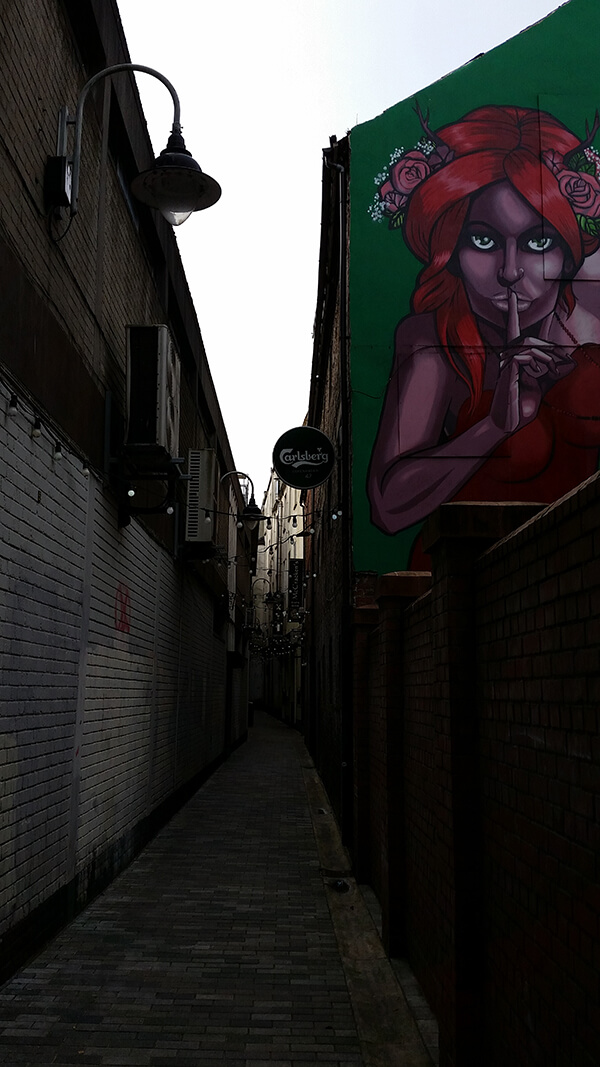
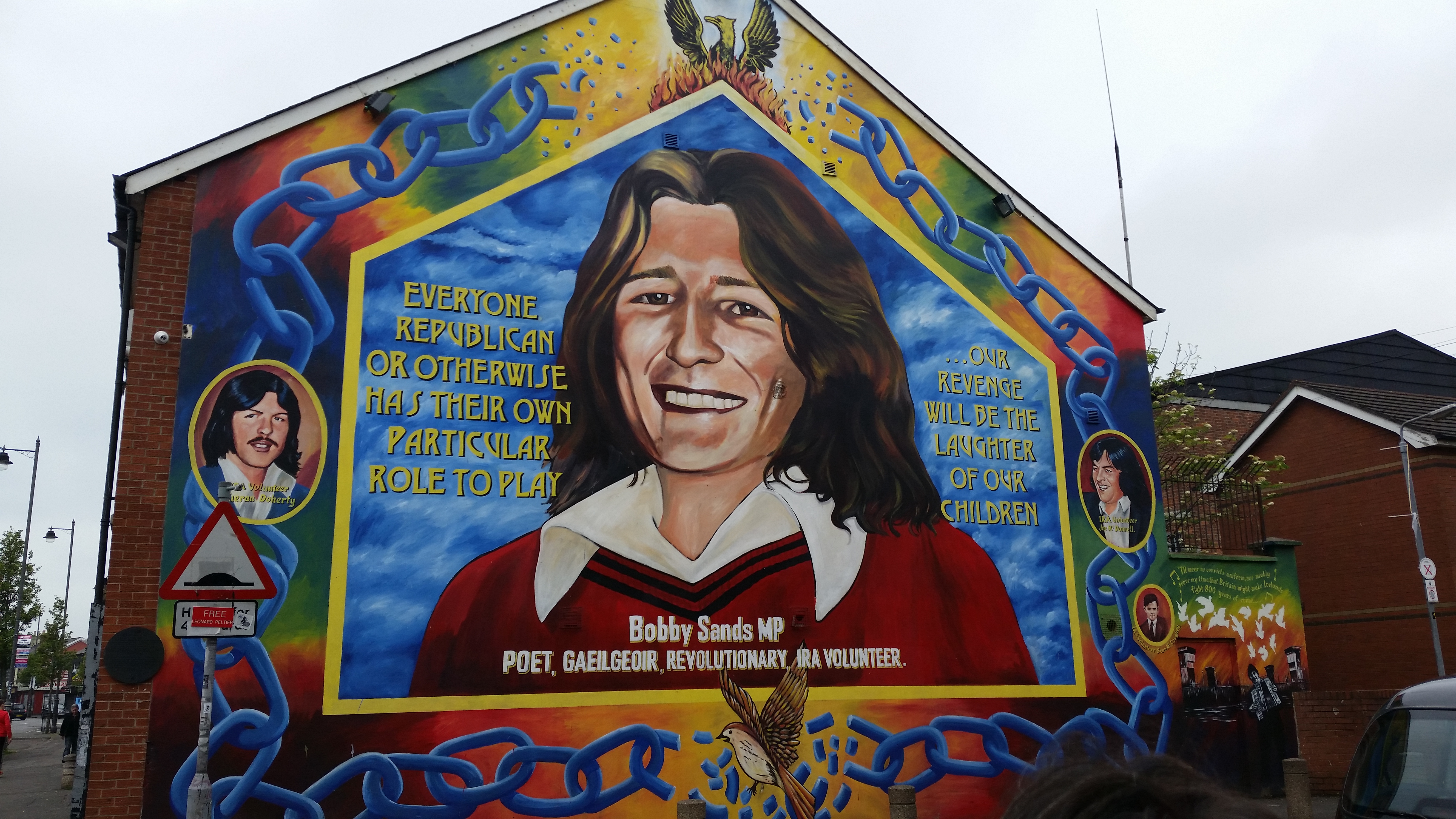
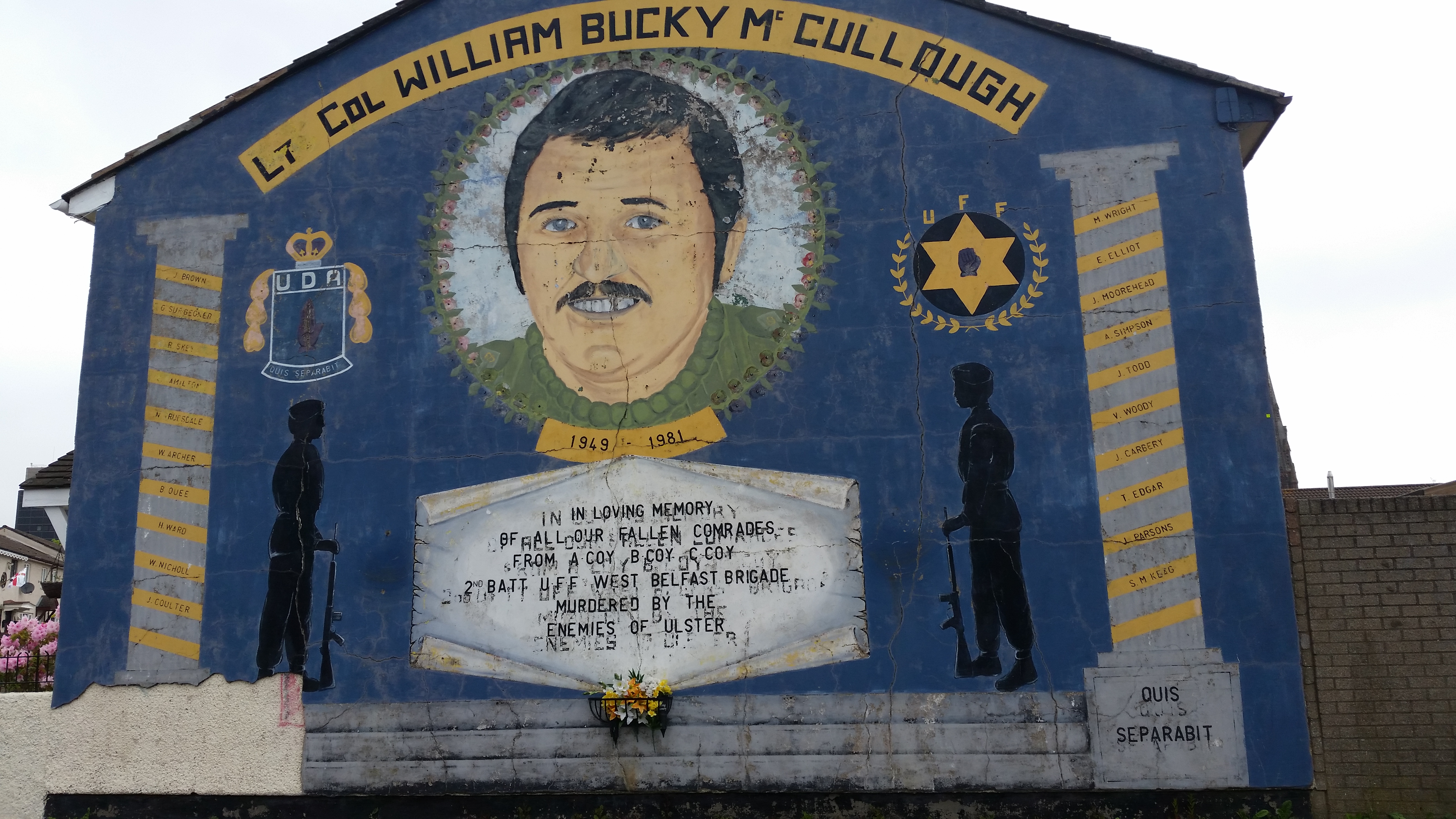

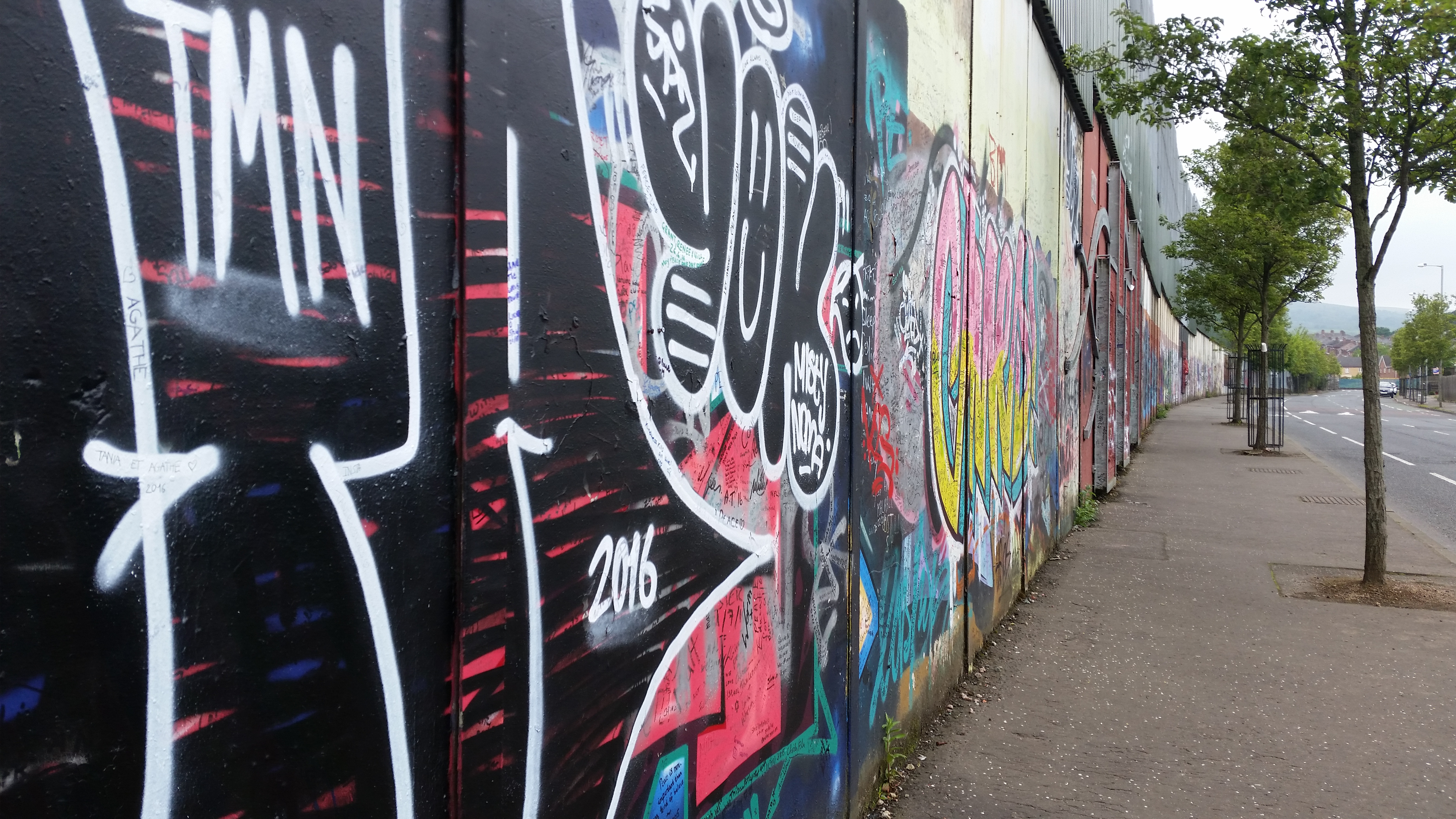
It is hard to overstate the prevalence of murals in Belfast. They are everywhere. Murals range from commissioned art pieces to elaborate unofficial community bulletin boards. Murals, along with flags, also serve the purpose of marking neighborhoods and declaring identities and loyalties. West Belfast also has a number of Peace Walls which have become another form of public art.
Black Taxi Tours around the Peace Walls are some of the most popular tourist attractions in Belfast. All the tours tend to go to same places; while on my tour, I counted nearly another dozen taxis tours at one stop alone. The murals themselves change to reflect concerns, temperaments, and issues; most of the ones I saw on the tour were memorials. I was surprised by the overwhelmingly political nature of the memorials and the general lack of any of type of religious iconography. Religious language/ symbolism was most prevalent in the messages visitors scribed on the Peace Walls.
Murals, along with flags, buntings, and pendants, are ways for communities to articulate their identities, cultures, and concerns. The lack of religious iconography is indicative of the ethno-cultural-political nature of division between Catholic/Republicans and Protestant/Loyalists. Although religious monikers are used to identify sides, the theological differences between them have been subsumed into political, cultural differences.

174 Trust is a Christian organization which aims to be a transformative presence in the community “restoring hope, promoting justice, building peace and providing leadership.”[1] They recently opened the Duncairn Centre for Culture & Art, a multi-purpose space, which includes a preschool, afterschool programmes, various art spaces, and a café. They focus on creating a safe, hospitable space in which all feel welcome; and in doing so, they encourage people to interact with the “other.” Conversations around the past are woven into experiences which foster relationship building and recognition of a shared humanity.

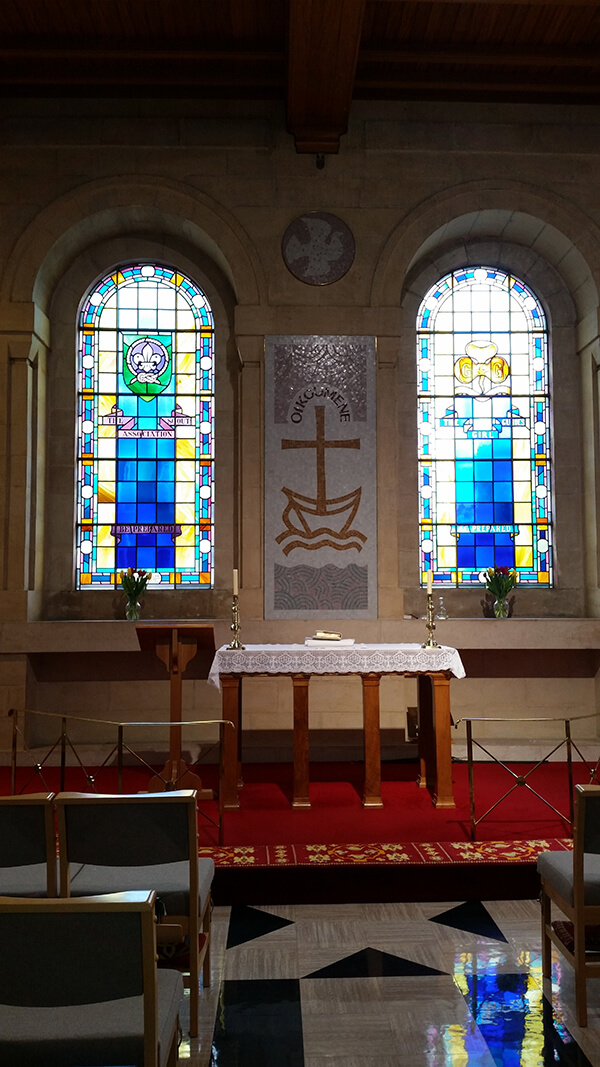
St. Anne’s, also called the Belfast Cathedral, is the cathedral church of the Church of Ireland (Anglican) in Belfast. As such, it occupies a prominent place in the city’s physical and religious landscape. While the church does not specifically mark the Troubles, it tries to create a space in which people of a variety of faith traditions feel welcome. Healing services in the Chapel of Unity have drawn people of various faiths for several decades. A recent series of theological discussion classes has also been very successful, drawing people from many religious and non-religious backgrounds. These courses offer a safe space for people to talk intentionally about theology and its impact on public issues. While not specifically courses in public theology for reconciliation, courses like these give people a place to start to work through and understand the impact of theology on worldviews, politics, public relations, and communities.

I am particularly interested in how research done by scholars in a university setting is shared with the public. To that end, I met with several professors from various universities in Belfast to ask them about how their work affects the communities around them. All the professors were deeply involved with the communities they studied and made a specific point to be available to them before, during, after, and apart from their research projects. The week I conducted my interviews most of the professors I spoke with also had community speaking engagements.
To highlight one example, Dr. Johnston McMaster and Dr. Cathy Higgins have worked extensively in communities on reconciliation and conflict resolution by teaching adult education courses. Their courses explore theologies and their consequences, including the historical roots of the theological views. Over the years, these courses helped increase mutual understanding, build relationships between Protestants and Catholics, and foster the development of a public theology which acknowledges its historical roots (and consequences) and aims to create a better future.
My trip to Belfast gave me a great respect for those who are working for reconciliation in Northern Ireland. They face a tremendous task to which there is no clear, easy, or universally applicable answer. It can be tempting to look from the outside and wonder “why don’t they…”, “can’t they just…”, “if they only…”, or to visit a peace wall, write a message, and think “I am advocating for peace here.” Peace and reconciliation, however, are not abstract concepts which can be bequeathed to people. They are deeply personal and interpersonal, tied to context, place, and history, and worked out daily in all areas of life. Moving forward in peace and reconciliation requires an understanding and recognition of the past as well as a dedication to the hard work of moving forward in new ways on a new path. I am profoundly thankful for the opportunity to have seen this work in action.

[1] Stewart Parker, Northern Star, Plays: 2 (London: Methuen Drama, 2000. 1-82. Print.
[2]“Strategic Plan,” 174 Trust, accessed June 16, 2016, http://www.174trust.com/home-horizon/.